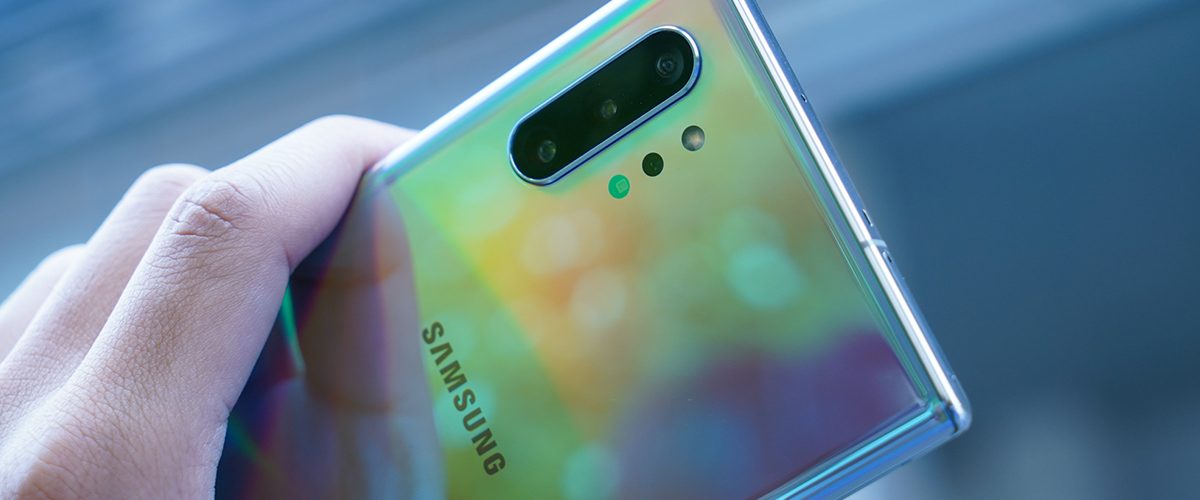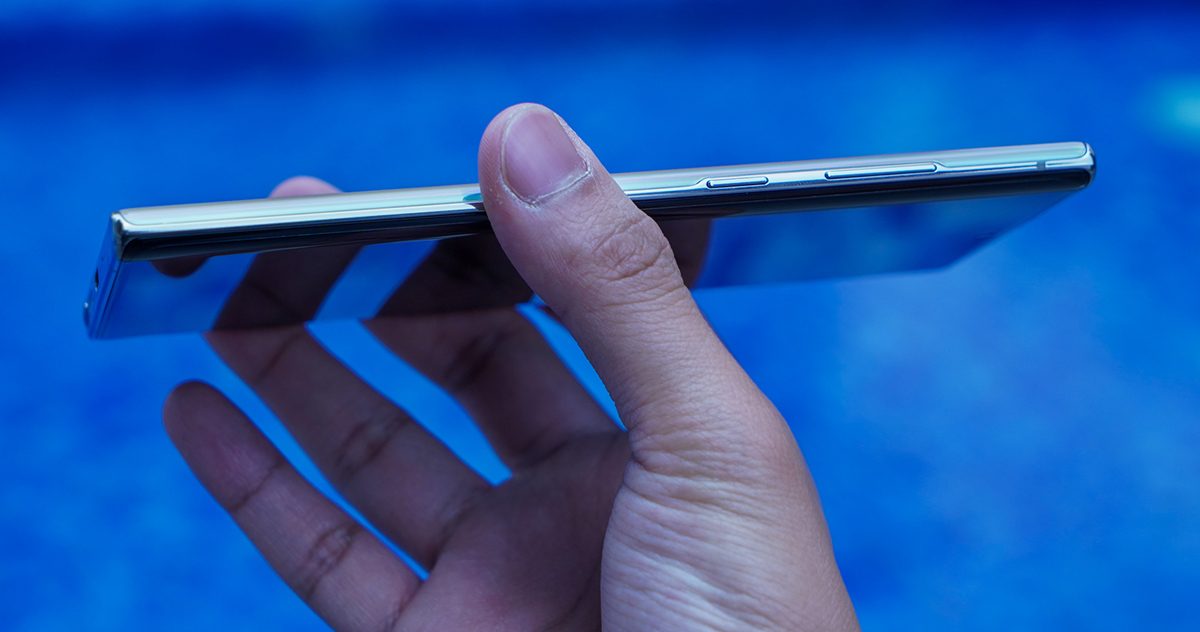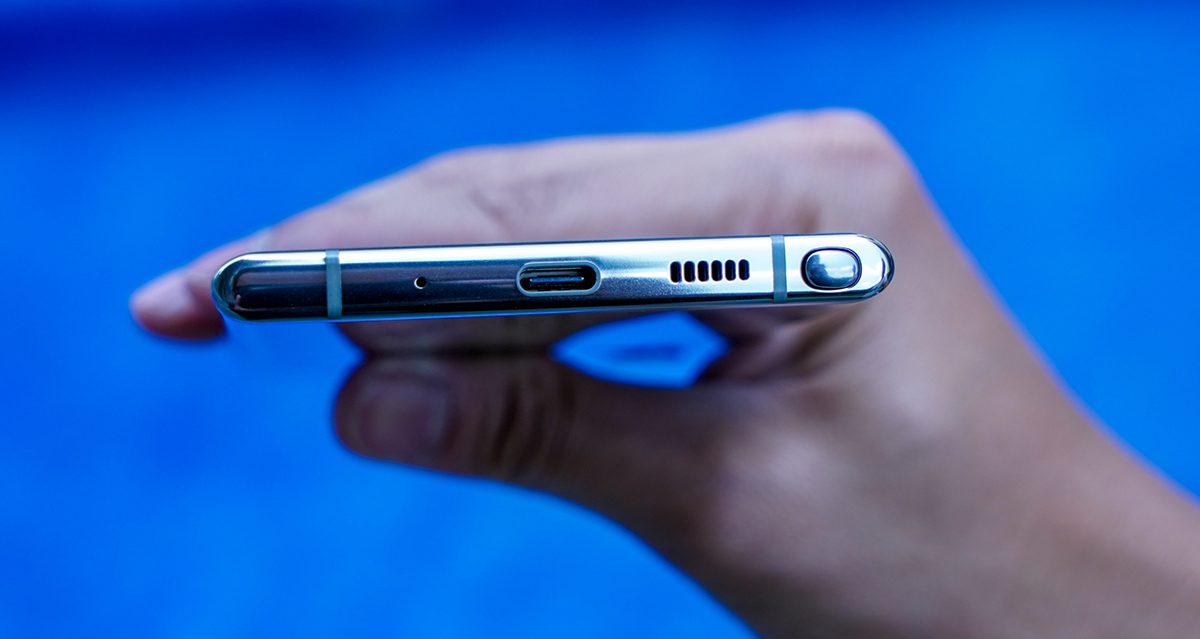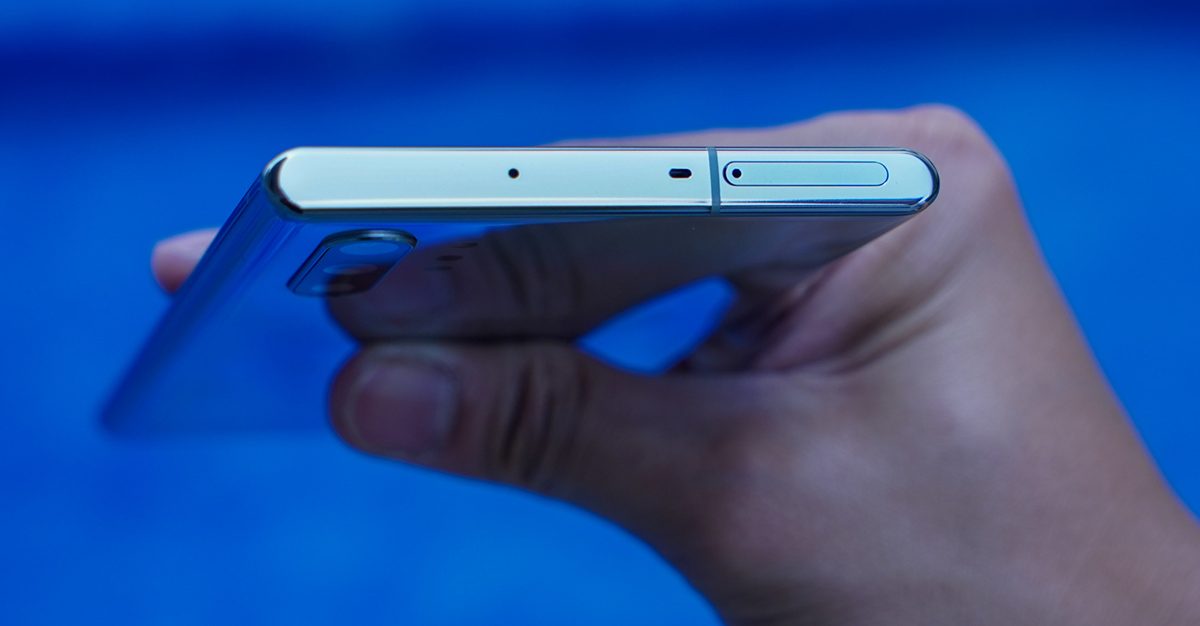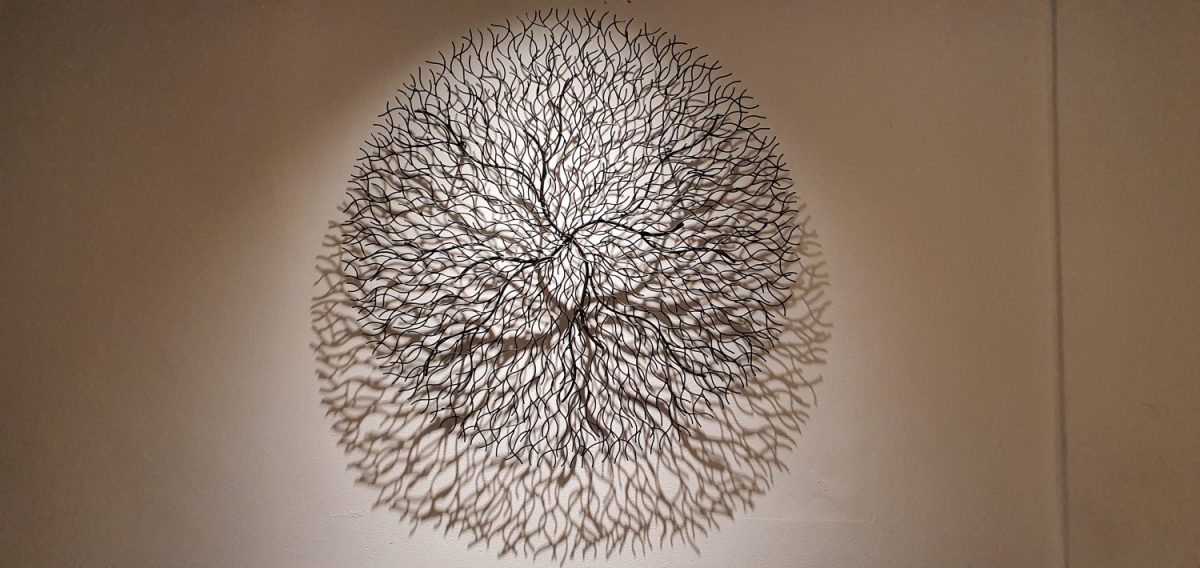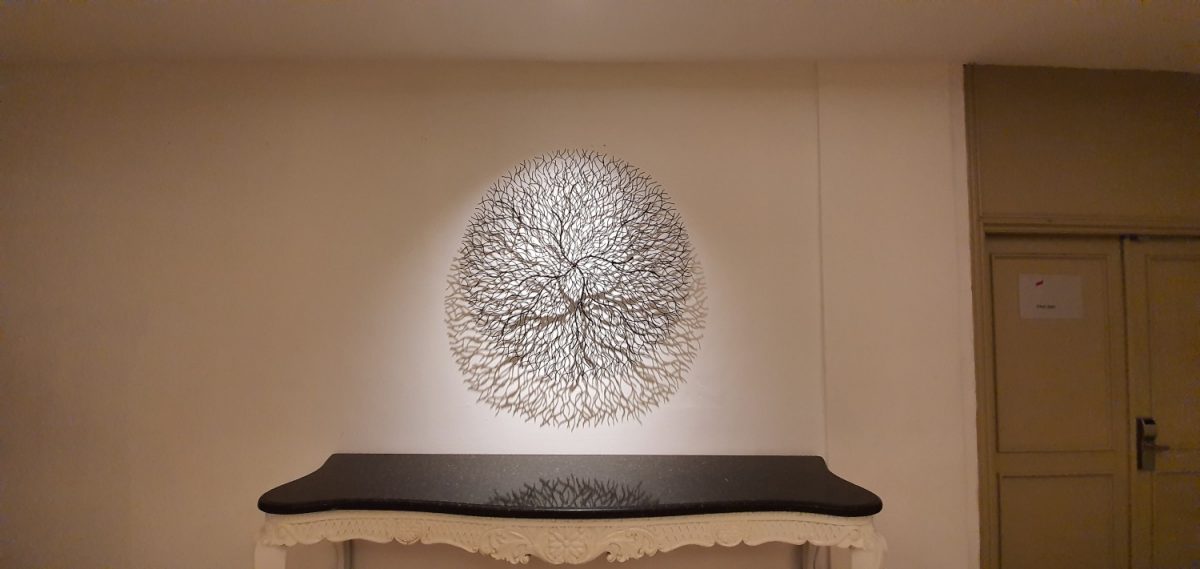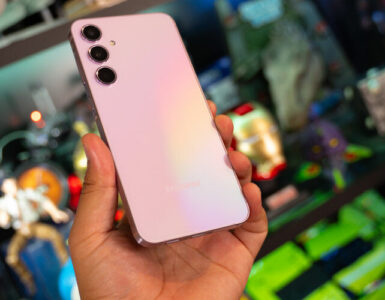Since its inception, Samsung’s Galaxy Note series has dominated the large screen smartphone space. Once upon a time, the term phablet was even coined to categorize these types of oversized phones, but in the last nine years, screen sizes of devices have increased gradually, such that the term no longer has any meaning.

But if anything, a Note device and by extension, name, is now synonymous with two core features – a larger display on a high-end unit, and the use of a writing instrument, known as the S-Pen, that expands upon the basic features of a phone.
With its tenth phone in the last nine years (Samsung skipped a year in its naming convention), the Korean chaebol has continued to outdo itself, by crafting a thinner, more powerful device in a sleeker, more beautiful chassis. The new Galaxy Note 10 is a gigantic yet mini marvel that continues to define what a premium Android device is capable of.
While the company has longed released two versions of its flagship Galaxy S device, differing mainly in screen size, this is the first time that it is doing the same for the Note 10 series. The base Note 10 offers a 6.3-inch 1080p screen, compared to the 6.8-inch 1440p display on the larger Note 10 Plus. Both use the same Qualcomm Snapdragon 855 processor, though the Note 10 comes with 8 GB of RAM, while the Note 10 Plus comes with 12 GB of RAM.
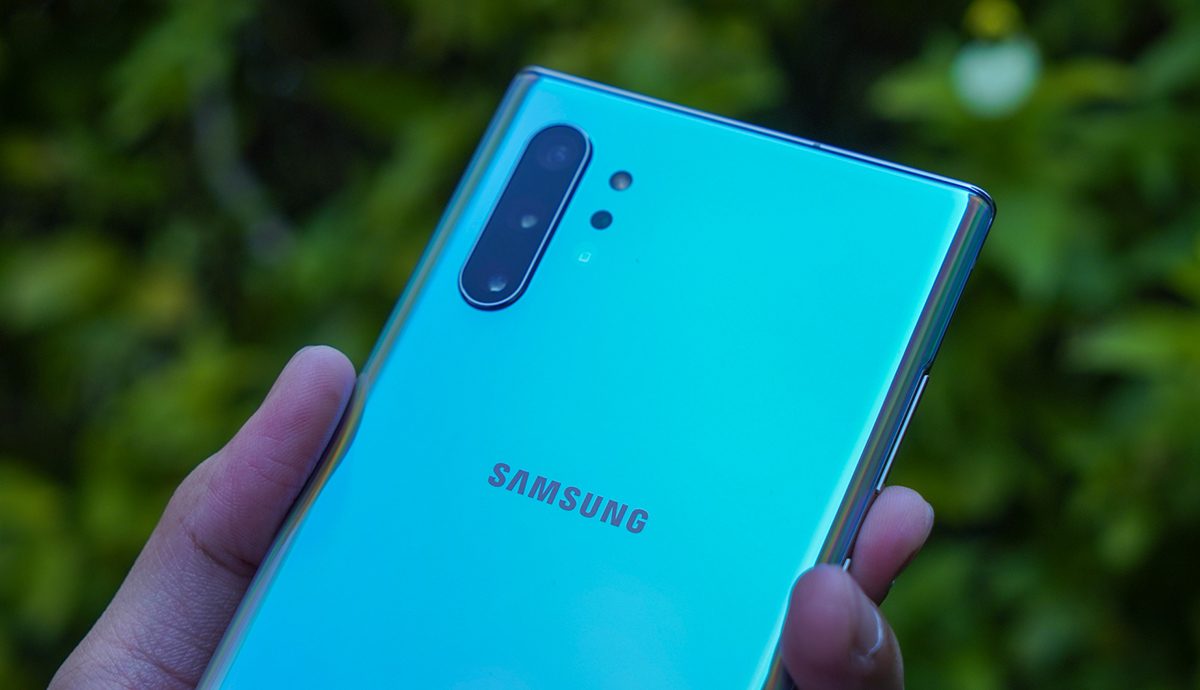
This makes the Note 10 roughly the same size as the Galaxy S10 Plus (6.4-inch), which is Samsung’s way of providing a larger device, but now with the built-in features of the S-Pen, for those who want a writing instrument and tool on their Android phone.
The bottom line is that while the Note 10 series has a more powerful processor, larger screen, more powerful camera and other bells and whistles, Samsung has continued to show that the phone is a sum greater than all its parts. The amazing camera is supported by a sharp, detailed screen that brings photos, videos and the normal everyday viewing experience to the next level, while the phone’s design, with its curved sides on the front and back, and its barely-there bezel, helps bring a really large screen to an extremely compact form factor.
Design-wise, the Note’s petite frame continues to showcase how far it has come in terms of aesthetics. While the likes of even Apple have gone for a louder look, with large camera lenses and a thicker body, Samsung is showing its design prowess by shaping an extremely thin device that contradicts its large frame.
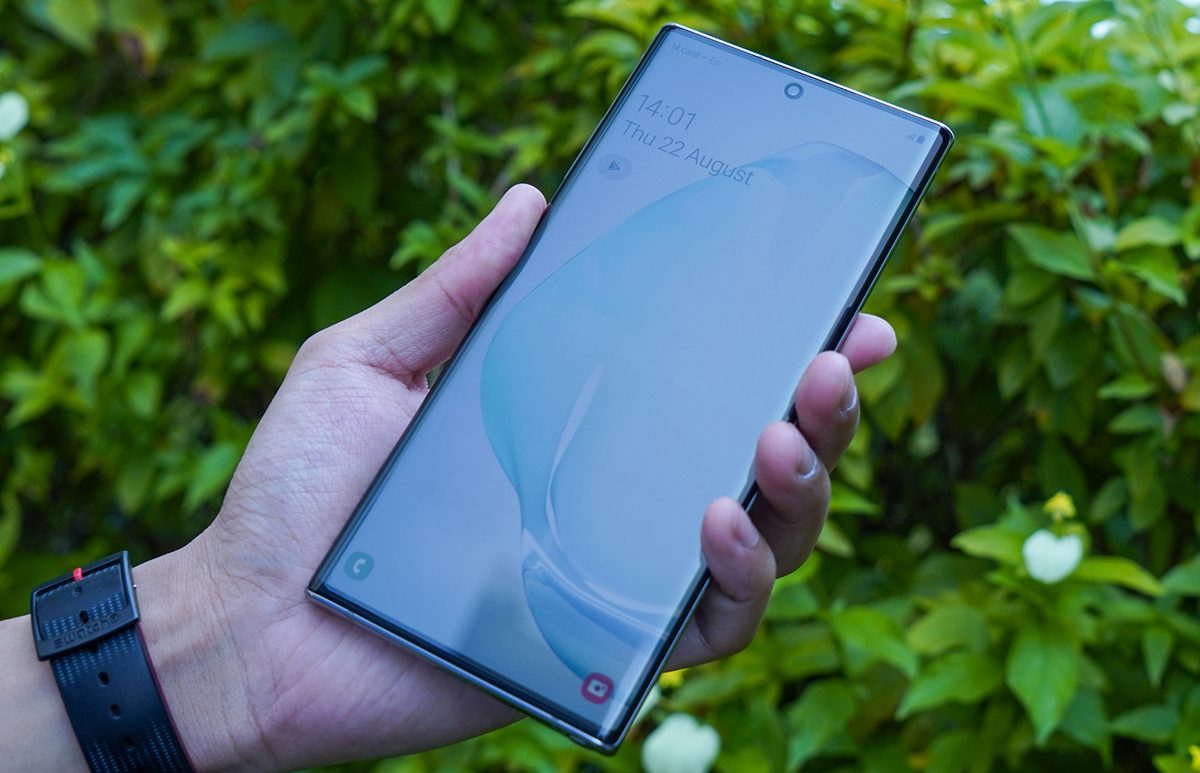
The rear of the camera comes in a selection of colours, but the highlight is its iridescent highlights, mixed in with the chrome that creates a shimmery aura that oozes class and charm. On the reverse side is the Dynamic AMOLED screen that Samsung is using for its S10 range, with 3,040 x 1,440 resolution (at 498 pixels per inch). The display is also HDR10+ certified, which means sharper colours and deeper blacks for watching such content on streaming services such as Netflix.
This time, the Volume and Power buttons are located on the left side of the phone, but the biggest change is its omission of the 3.5mm jack. Truth be told though, wires are quite passe and the freedom of wearing just a pair of earbuds, without the annoyance of wires is something worth embracing.
That said, the speakers on the Note 10 Plus are quite loud and precise, so if you are alone, why not enjoy the audio in its full glory.
Yes, the camera still pops out of the rear, simply because of the physical limitations of housing a physical camera lens array in a thin chassis, but the three-camera set up is surprisingly small – unlike the circular behemoth that is Huawei’s latest Mate 30 flagship.
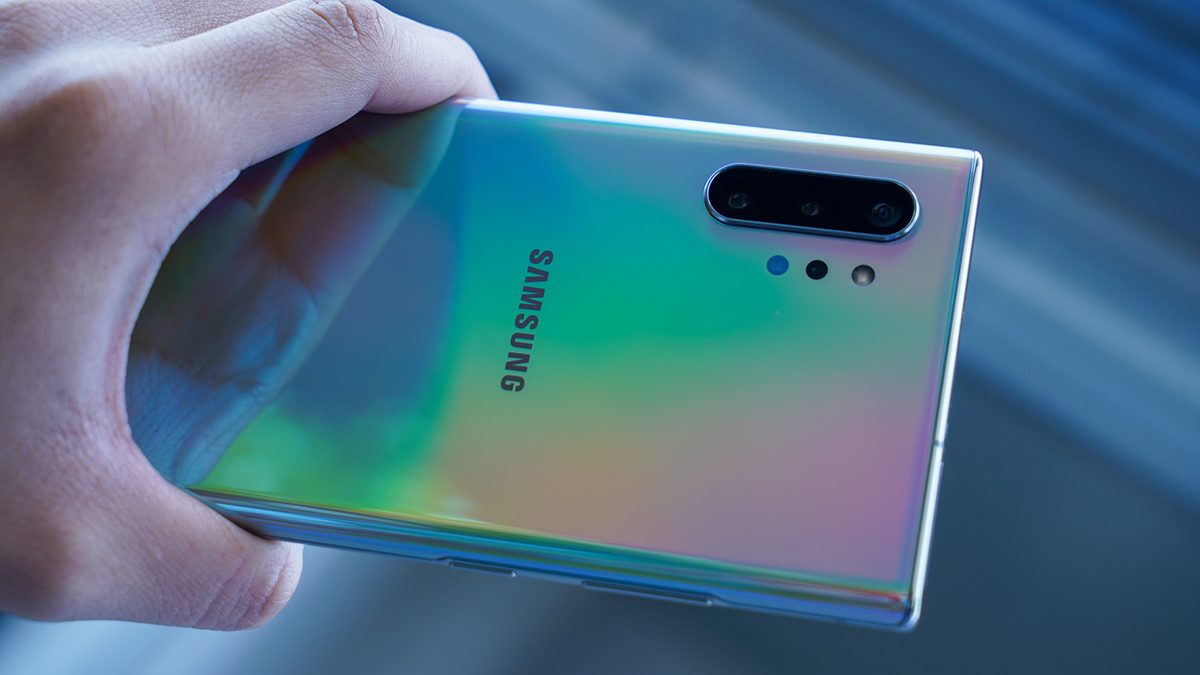
Yet, the camera doesn’t falter in performance in anyway. The zoom and wide angle lens can be called up instantaneously, and the camera delivers in performance, especially with night time shots.
Housed in a vertical window are three camera lenses at the rear of the Galaxy Note 10 Plus. The main camera is a 12-megapixel variable aperture (between f/1.5 and f/2.4) lens, with optical image stabilization. Supporting this is a 12-megapixel f/2.1 telephoto lens with a 2X optical zoom, and a 16-megapixel f/2.2 ultra-wide lens. Beside it is a time-of-flight sensor and an LED flash.
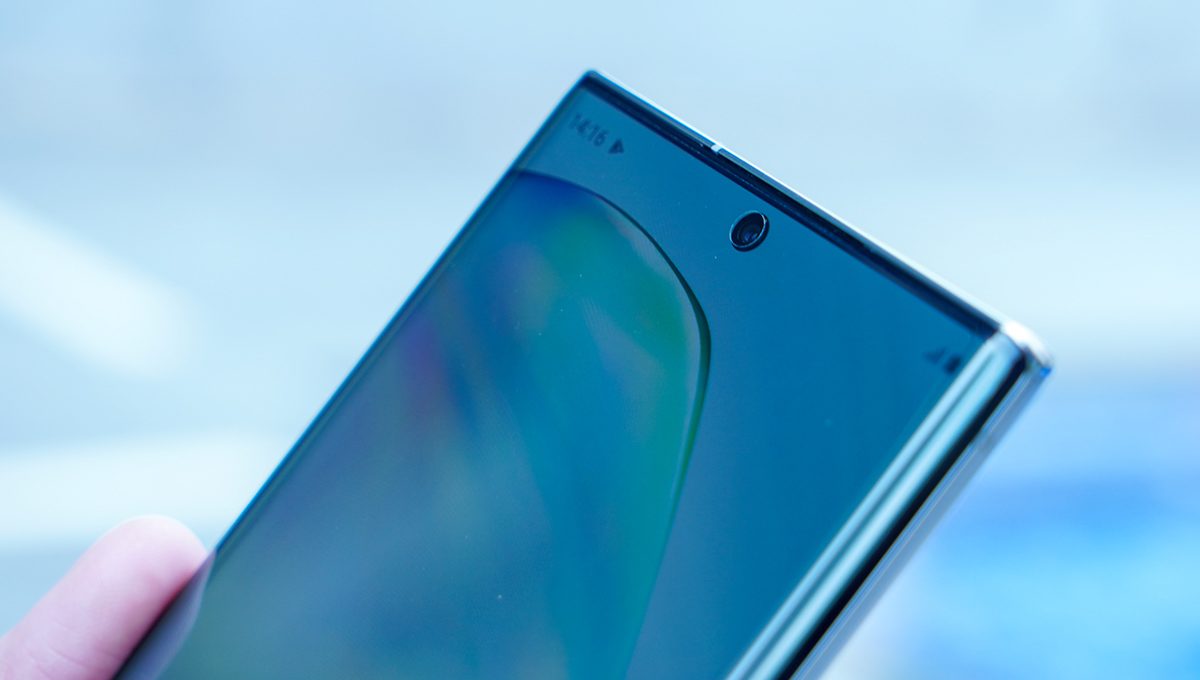
A time-of-flight sensor is how smartphones have progressed to take low-light photos. The camera is able to emit a signal and the phone measures the distance between the sensor and an object, and uses it to identify the focus of the camera. And on the front, there is a 10-megapixel, f/2.2 aperture, auto-focus camera, housed strategically behind a tiny hole punched on the screen.
In scenes with little light, the camera is able to pick up details and colours. When used side by side with the iPhone 11 Pro, both cameras perform admirably and truly own their Best Smartphone Camera accolade accorded by virtue of their different operating system.
We took the Note 10 Plus out for a night out, to see how the camera would fare both outdoors and indoors, and the camera does not disappoint. In day shots, the slight oversaturated colours does seem to paint a brighter picture, but when used on night shots, the results are astounding.
There’s an addition of a Depth Vision feature on the Note 10 Plus, which uses two physical sensors to separate a subject from its surroundings. This would create better photos in portrait mode and AR measurements. Without a Note 10 to compare though, there’s no way to determine if its absence affects photos.
Naturally, this is not the end of the camera system. There’s an improved portrait mode, as well as an Instagram mode and Live Focus, to provide simpler ways to take photos. Heck, even the S Pen can be used as a tool, to snap photos.
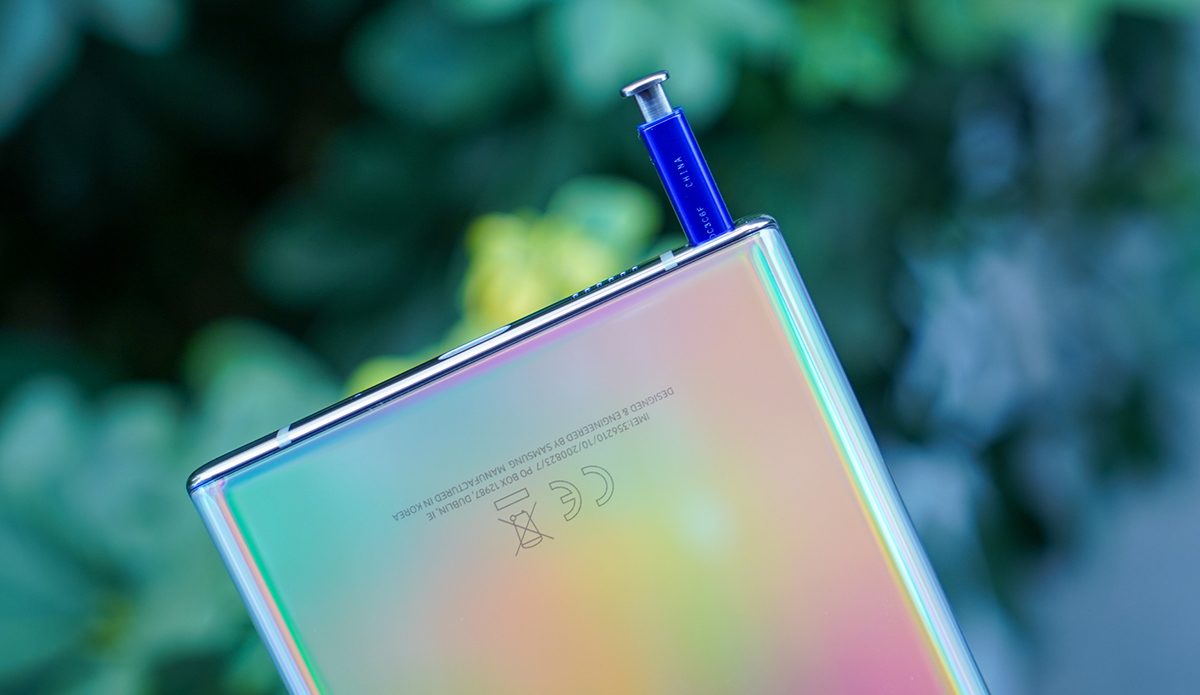
In terms of handwriting recognition and features, the S Pen on the Note 10 offers the best in class features. Writing on the screen is smoother than ever, and the stylus is able to recognise more precise handwriting, which can sometimes be rather difficult to master, on a relatively small screen, writing wise. From colouring, to filling up documents or digital signatures, the S Pen has proven to be an indispensable tool.

Biometrics wise, the Note 10 series utilises the same ultrasonic fingerprint sensor at the bottom of the front display, which was used on the S10 range. Simply place your thumb on the glass on the front, and access is yours. While the feature is fast to trigger, reliability remains to be seen. As with many biometrics, it’s effectiveness seems to wane over time, and on the S10, there was a need to redo the fingerprint every six months or so, otherwise the biometrics would fail to register my thumbprint. Here’s hoping Samsung fixed in on the Note 10.
The bottom line is that Samsung has an all round winner with the Note 10 series, again. The Note 10 Plus brings in everything great that Samsung has ever placed in an Android phone, and has made improvements. Yes, some features, such as the S Pen and camera, are slight improvements over what was already great to begin with. Perhaps it’s good to note that we’re at a stage where we can no longer expect great strides in smartphone technology, because we’re already getting as good as it gets – with Samsung showing the way.
GEEK REVIEW SCORE
Summary
As the most reliable Android smartphone maker in the world, Samsung has outdone itself with the Galaxy Note 10 Plus. Yes, it is pricier than most, but perfection comes at a price.
Overall
9.7/10
-
Aesthetics - 10/10
10/10
-
Build Quality - 10/10
10/10
-
Performance - 10/10
10/10
-
Value - 9/10
9/10
-
Geek Satisfaction - 9.5/10
9.5/10

